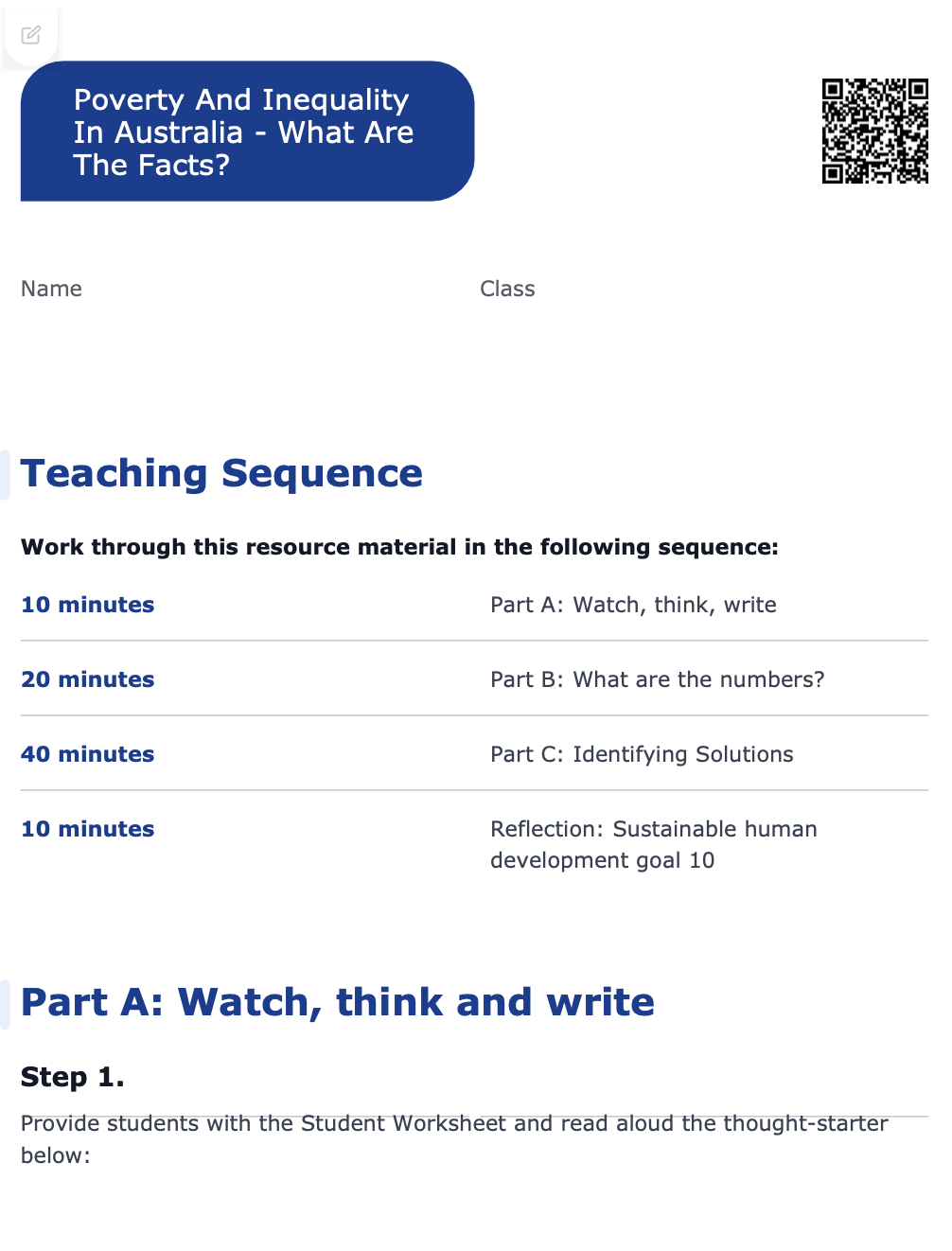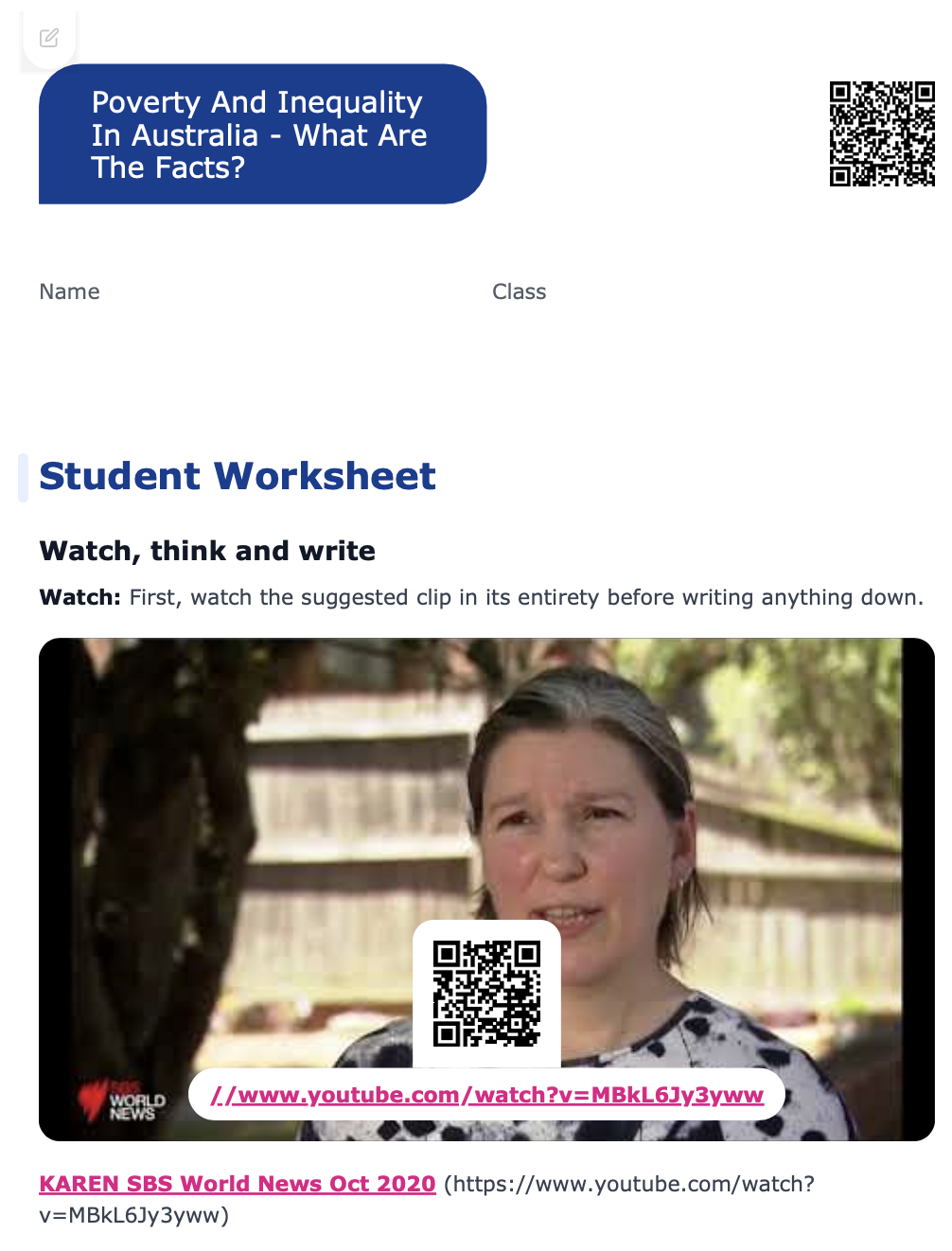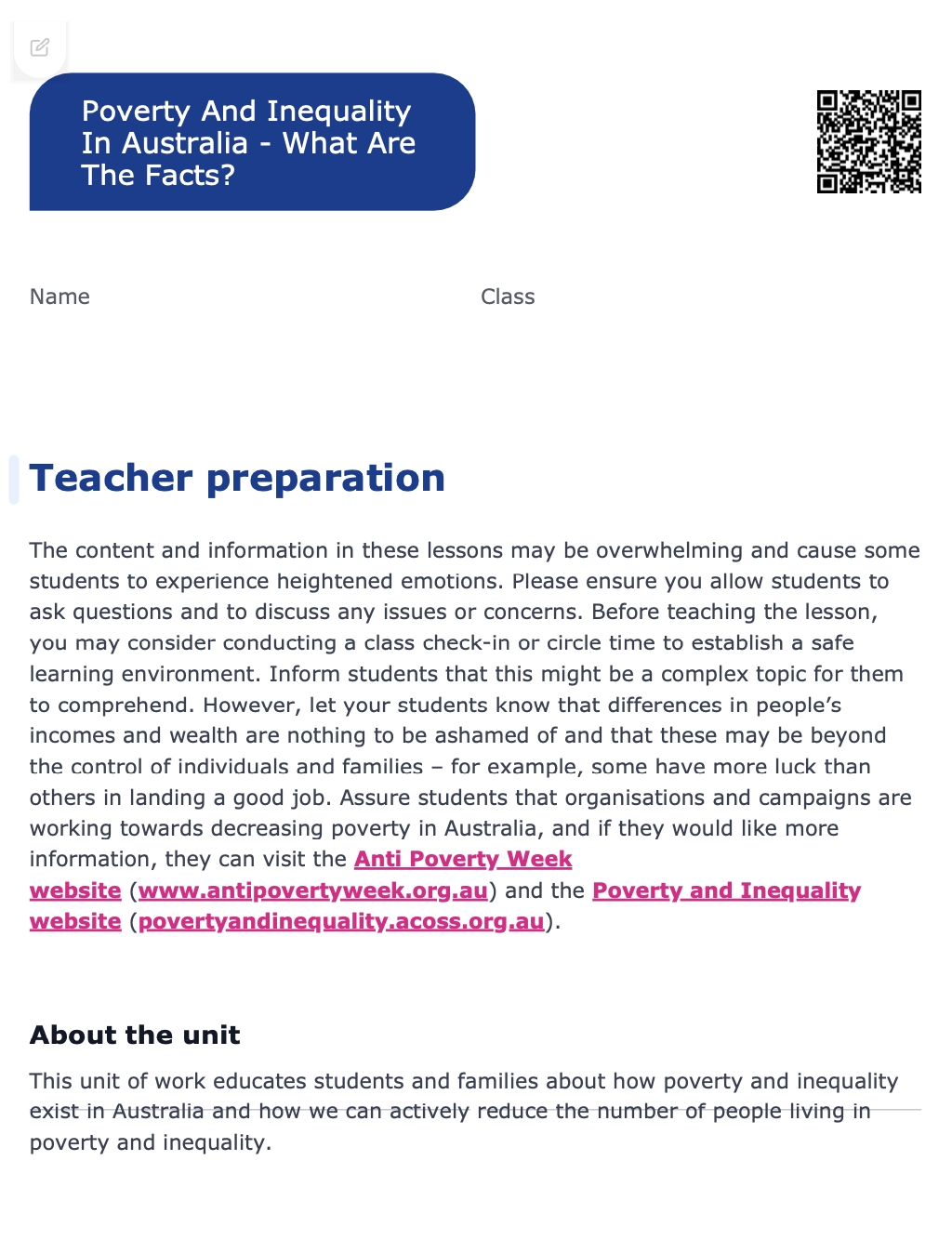Lesson summary
In this lesson, students explore poverty and inequality through a series of short video clips whereby they respond to the experiences of living on government income support payments. Students further explore the ideas of poverty and inequality by engaging with a number of data sets and online reports, analysing their content. Students then articulate their understanding of poverty and inequality and formulate solutions for addressing these issues through the development of a digital presentation.
Learning intentions:
Students will...
- understand that inequality and poverty can negatively impact people’s lives
- understand why inequality and poverty can negatively impact society
- explain why poverty is a risk factor for Australia’s overall health
- utilise technology to promote solutions for reducing poverty and inequality in Australia.
Success criteria:
Students can...
- identify the inequalities that exist due to poverty
- interpret and analyse health data
- understanding the poverty gap and its impacts on health
- communicate their understanding of poverty and inequality in a digital format.
Lesson guides and printables
Curriculum links
Select your curriculum from the options below.
Lesson details
Skills
This lesson is designed to build students’ competencies in the following skills:
- community engagement
- communication
- creativity
- critical thinking
- digital literacy
- empathy
- ethical understanding
- global citizenship
- problem solving
Curriculum Mapping
Australian Curriculum content descriptions:
Years 9 & 10 Health and Physical Education:
- Critique behaviours and contextual factors that influence health and wellbeing of diverse communities (ACPPS098)
- Propose, practise and evaluate responses in situations where external influences may impact their ability to make healthy and safe choices (ACPPS092)
Syllabus outcomes: PD5-1, PD5-2, PD5-3
General capabilities: Literacy, Critical and Creative thinking, Personal and Social Capabilities, Ethical Understanding
Cross-curriculum priority: Sustainability
Relevant parts of Year 10 achievement standards:
By the end of Year 10, students critically analyse contextual factors that influence identities, relationships, decisions and behaviours. They analyse the impact attitudes and beliefs about diversity have on community connection and wellbeing. They evaluate the outcomes of emotional responses to different situations. Students access, synthesise and apply health information from credible sources to propose and justify responses to health situations. They apply decision-making and problem-solving skills when taking action to enhance their own and others’ health, safety and wellbeing.
Level of teacher scaffolding: Medium – facilitate class discussion
UN Sustainable Development Goals
UN SDG 1: End poverty in all its forms everywhere
- Target: 1.1: By 2030, eradicate extreme poverty for all people everywhere, currently measured as people living on less than $1.25 a day.
- Target: 1.1: By 2030, ensure that all men and women, in particular the poor and the vulnerable, have equal rights to economic resources, as well as access to basic services, ownership and control over land and other forms of property, inheritance, natural resources, appropriate new technology and financial services, including microfinance.
Resources Required
- A device capable of creating audio-visual recordings, such as an iPad or camera (optional)
- A device capable of presenting a video to the class
- A device that allows students to conduct research in a safe manner
- Student Worksheets – one copy per student
Additional Info
Time required: 60 mins
Level of teacher scaffolding: Medium – facilitate class discussion
These lessons have been designed in consultation with Anti-Poverty Week and ACOSS/UNSW Poverty and Inequality Partnership.
The content and information in these lessons may be overwhelming and cause some students to experience heightened emotions.
Please ensure you allow students to ask questions and to discuss any issues or concerns. Before teaching the lesson, you may consider conducting a class check-in or circle time to establish a safe learning environment. Inform students that this might be a complex topic for them to comprehend. However, let your students know that differences in people’s incomes and wealth are nothing to be ashamed of and that these may be beyond the control of individuals and families – for example, some have more luck than others in landing a good job.
Assure students that organisations and campaigns are working towards decreasing poverty in Australia, and if they would like more information, they can visit the Anti Poverty Week website (www.antipovertyweek.org.au) and the Poverty and Inequality website (povertyandinequality.acoss.org.au).




Welcome back!
Don't have an account yet?
Log in with:
Create your free Cool.org account.
Many of our resources are free, with an option to upgrade to Cool+ for premium content.
Already have an account?
Sign up with:
By signing up you accept Cool.org's Terms and Conditions(Opens in new tab) and Privacy Policy(Opens in new tab).